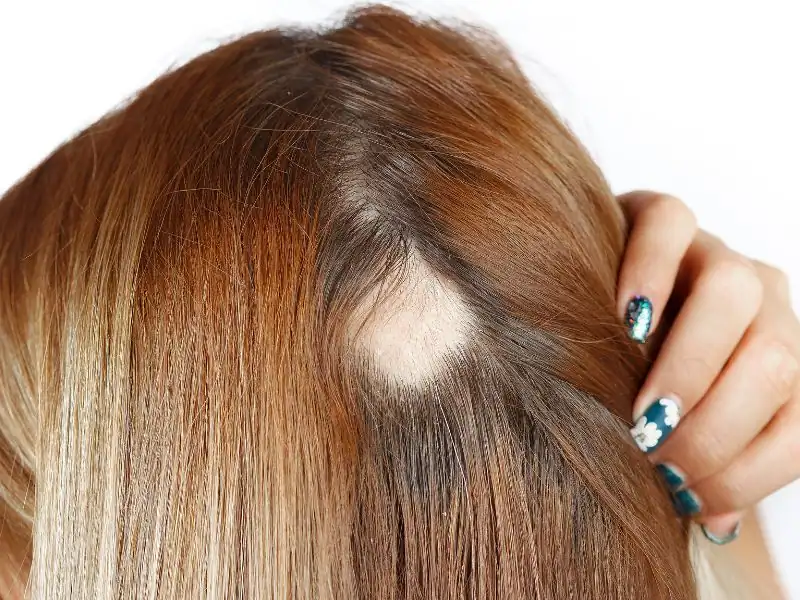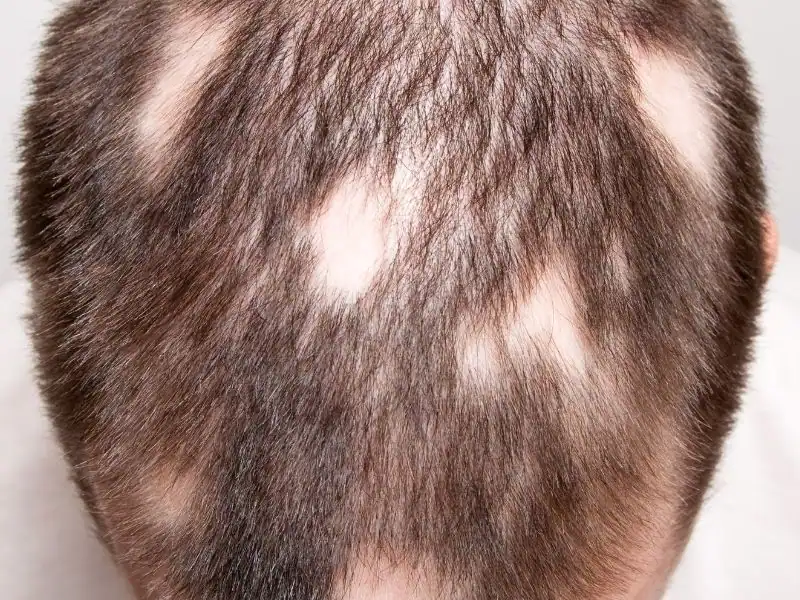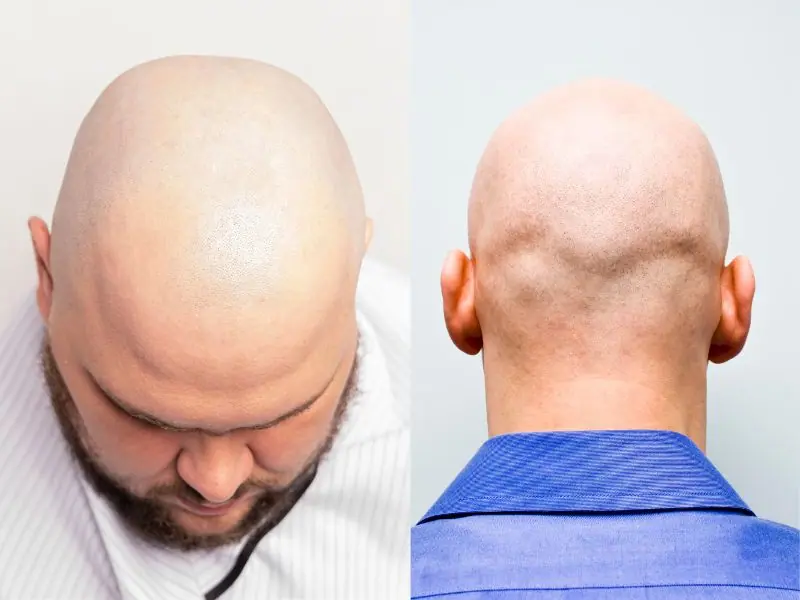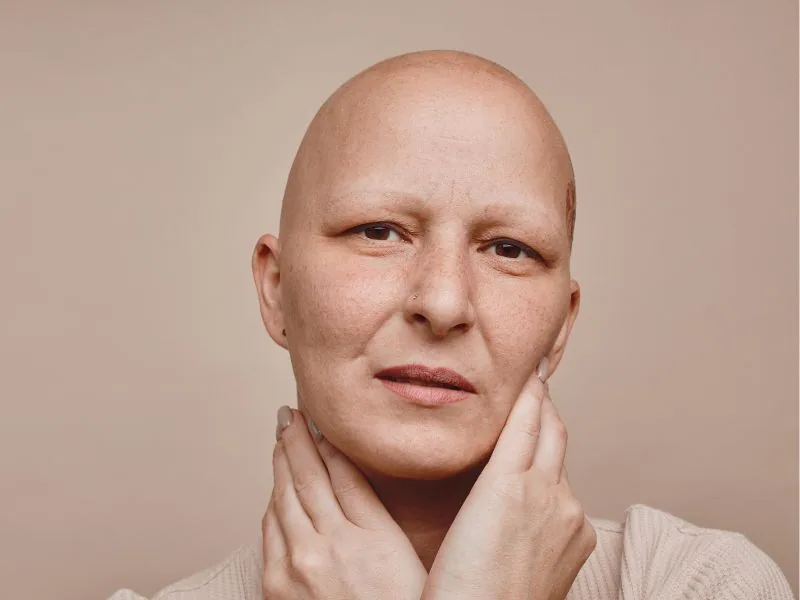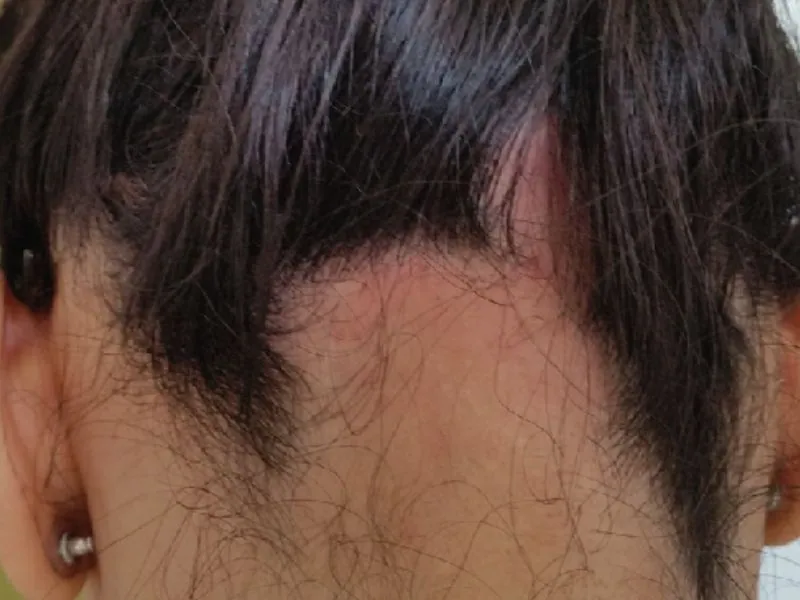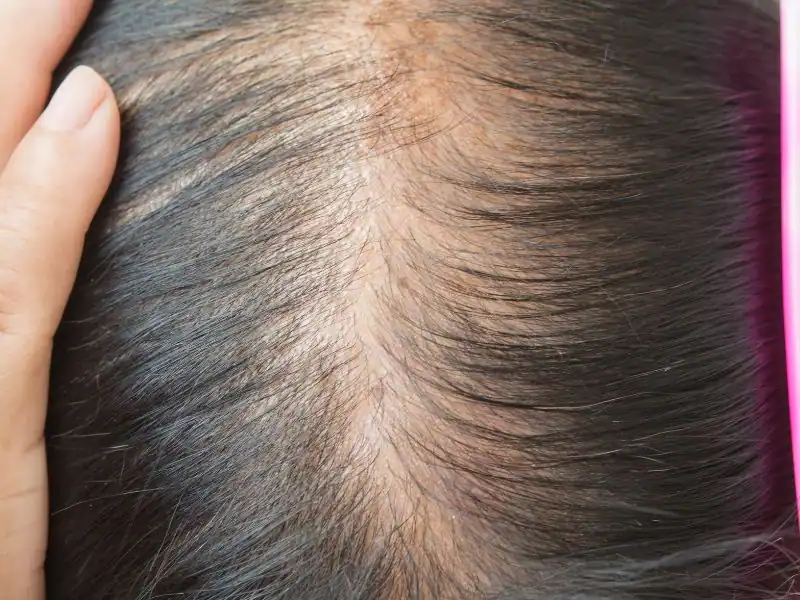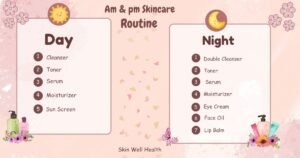7 Major Types of Alopecia Areata: You Absolutely Need To Know
If you’ve been noticing excessive hair loss or patchy bald spots on your scalp, you might be experiencing a condition called alopecia areata. This autoimmune disorder affects millions of people worldwide and can lead to varying degrees of hair loss.
Understanding the different types of alopecia areata is crucial for anyone dealing with this condition. In this article, we’ll dive into The 7 Major Alopecia Areata Types that you absolutely need to know.
Alopecia Areata Overview
Alopecia areata is an autoimmune disorder where the immune system mistakenly attacks hair follicles, resulting in hair loss.
Causes:
While the exact cause remains unknown, researchers believe several factors play a role:
Genetics: People with a family history of alopecia areata are more likely to develop it, suggesting a genetic predisposition. Certain genes related to immune function seem to be involved.
Autoimmune connection: Having other autoimmune diseases like psoriasis, vitiligo, or thyroid disease increases the risk of alopecia areata. This suggests a shared underlying immune system dysfunction.
Environmental triggers: Though not fully proven, some believe stress, severe illness, or trauma might act as triggers in individuals genetically susceptible to the condition.
Nutrient deficiencies: Deficiencies in iron, vitamin D, zinc, B vitamins, and some amino acids might contribute to hair loss in some cases.
Also Read:
Top 9 Strong Causes of Alopecia Areata: You Need to Know
The 7 Major Alopecia Areata Types
Let’s explore the seven primary types of this condition.
1. Alopecia Areata Monolocularis
- This type involves a single bald spot on the scalp.
- This is the most common kind and impacts approximately 80% of individuals with alopecia areata.
- It leads to the appearance of one or more oval bald patches on the scalp, beard, eyebrows or other areas with hair.
- The size of these patches can range from that of a coin to inches in diameter.
- Hair loss can occur suddenly or gradually. May come and go over time. In some cases, these patches may merge together to form areas of hair loss.
- It’s often the mildest form and can be easily hidden with hairstyles.
2. Alopecia Areata Multilocularis
- Alopecia areata multilocularis is a subtype of alopecia areata characterized by patchy hair loss in multiple areas of the scalp.
- Unlike the single patch found in alopecia areata monolocularis, multilocularis involves several distinct bald patches scattered across the scalp. These patches can differ in size and shape. Sometimes they combine to create areas of hair loss.
- Multiple oval bald patches spread across the scalp often concentrated on the crown, sides and back of the head.
- More common than alopecia areata monolocularis, but less common than diffuse alopecia areata.
- The number and size of patches can vary; some individuals may only have a few patches while others experience widespread hair loss.
- Sometimes multilocularis can be present together with forms of alopecia areata, such as alopecia totalis, which refers to the complete loss of hair on the scalp, or alopecia universalis, which involves the complete loss of hair over the entire body.
3. Alopecia Totalis
- Alopecia totalis leads to complete hair loss on the scalp.
- It is less common compared to patchy alopecia areata. It affects approximately 2% of individuals with this condition.
- Hair loss typically happens gradually over time, although there are instances when it may occur suddenly.
- People with alopecia totalis may also lose hair on their eyelashes and eyebrows.
- This significant hair loss can be emotionally challenging for many individuals.
Also Read:
How to Stop Alopecia areata from Spreading: You Need To Know
4. Alopecia Universalis
- The most extensive form, Alopecia Universalis, results in total body hair loss, including eyebrows and eyelashes.
- This is the rarest type of alopecia areata, affecting about 1% of people with the condition.
- It causes complete hair loss on the scalp, face, and body.
- Hair loss usually occurs gradually over time, but it can sometimes happen suddenly.
- Coping with this type requires comprehensive strategies.
5. Ophiasis Alopecia
- In Ophiasis Alopecia, hair loss follows a wave-like pattern around the sides and lower back of the scalp.
- Ophiasis alopecia is a rare form of alopecia areata, accounting for only about 0.02% of cases.
- Like other types of alopecia areata, the course of ophiasis is unpredictable. Hair loss may progress, pause, or even regrow spontaneously.
- In some cases, the band may also involve the eyebrows. This type can be stubborn to treat.
Also Read:
3 Alopecia Areata Regrowth Signs: According to Alopecian
6. Diffuse Alopecia Areata
- Diffuse alopecia areata, also known as alopecia areata incognita, is a relatively rare subtype of alopecia areata characterized by thinning hair distributed throughout the scalp rather than the distinct round or oval patches commonly seen in classic alopecia areata.
- Diffuse alopecia areata, because of its gradual nature, can sometimes be misdiagnosed as other hair loss conditions like telogen effluvium or androgenetic alopecia (male pattern baldness).
- Women are more commonly affected by diffuse alopecia areata than men, typically occurring in individuals aged between 20 and 40.
- It can be challenging to distinguish from other types of hair loss, making the diagnosis tricky.
7. Alopecia Barbae
- Alopecia barbae is specific to men and involves hair loss in the beard area.
- Alopecia areata barbae, also known as beard alopecia areata, is a type of hair loss that primarily affects facial hair growth, especially in the beard area.
- This condition occurs when the immune system mistakenly attacks the hair follicles, resulting in hair loss on the beard, jawline, neck, and occasionally cheeks.
- Hair loss can happen suddenly or gradually. Can affect individuals of any age. However, it tends to be more prevalent among men aged between 20 and 50.
- The severity of hair loss can vary significantly, ranging from patches to complete loss of facial hair (beard).
- In some cases, alopecia areata barbae may occur alongside other autoimmune conditions such as scalp alopecia areata, thyroid disorders, vitiligo or psoriasis.
- It can affect self-confidence and requires a unique approach to treatment.
Also Read:
Best Treatment for Alopecia barbae In Best 4 Ways
Treatments for Alopecia Areata
There is no one-size-fits-all solution for alopecia areata treatments, as their effectiveness can vary depending on their inflexibility and individual response. However, here are some generally used options:
1. Topical medications
- Corticosteroids: These anti-inflammatory creams or ointments are frequently the first line of treatment. They can suppress the immune attack and promote hair growth, but long-term use can have side effects.
- Minoxidil (Rogaine): This drug can help stimulate hair growth but is not as effective as corticosteroids for alopecia areata. It’s generally used to maintain regrowth after other treatments.
- Anthralin: This cream can irritate the crown but can also spark hair growth by sparking inflammation. It’s generally used for small areas of hair loss.
Also Read:
The Best Diet for Alopecia Areata: What to Eat and Avoid
2. Injections
- Corticosteroids Injections directly into the bald spots can be more effective than topical application for stubborn patches. However, repeated injections can damage the crown, so it’s not suitable for long-term use.
3. Light therapy
- Ultraviolet B (UVB) phototherapy: This involves exposing the scalp to UVB light several times a week to suppress the immune system and promote hair growth.
Also Read:
Hair transplant for Alopecia areata – Will It Improve Your Life?
4. Oral drugs
- JAK inhibitors: These newer remedies suppress the immune system and are showing promise in treating alopecia areata, but they come with implicit side effects and need careful monitoring.
5. Alternative therapies
- While not scientifically proven, some people find relief with acupuncture, massage, or stress-handling methods.
Also Read:
Find Your Solution: 11 Best Hair Vitamins for Alopecia areata
Remember:
It’s important to remember:
- Treatment effectiveness can vary, and the results may not be endless.
- Some treatments have side effects, so talking over them with your croaker is pivotal.
- Consultation with a dermatologist is essential for diagnosis and a personalized treatment plan.
Also Read:
Best 9 Tips by Doctors: How to Alopecia Areata Self-Care
Conclusion
Alopecia areata, with seven different types, can affect people differently. To deal with its effects on your life, you need to seek professional help, look into treatments, and find emotional support.
FAQs
Q1. Is alopecia areata contagious?
No, alopecia areata isn’t contagious. It’s an autoimmune condition.
Q2. Can stress triggers cause alopecia areata?
While stress can contribute, it’s not the sole cause. Genetics and other factors play a role.
Q3. Are there any natural remedies for alopecia areata?
While no natural remedy is a guaranteed cure, some individuals explore options like essential oils and salutary changes.
Q4. Can children develop alopecia areata?
Yes, children and adults of all ages can develop alopecia areata.
Q5. Is a full regrowth of hair possible?
Hair regrowth is possible, but results vary. Some experience full regrowth, while others may experience patient hair loss.
Here are some additional resources you might find helpful:
National Alopecia Areata Foundation:
About of National Alopecia Areata Foundation
American Academy of Dermatology:


